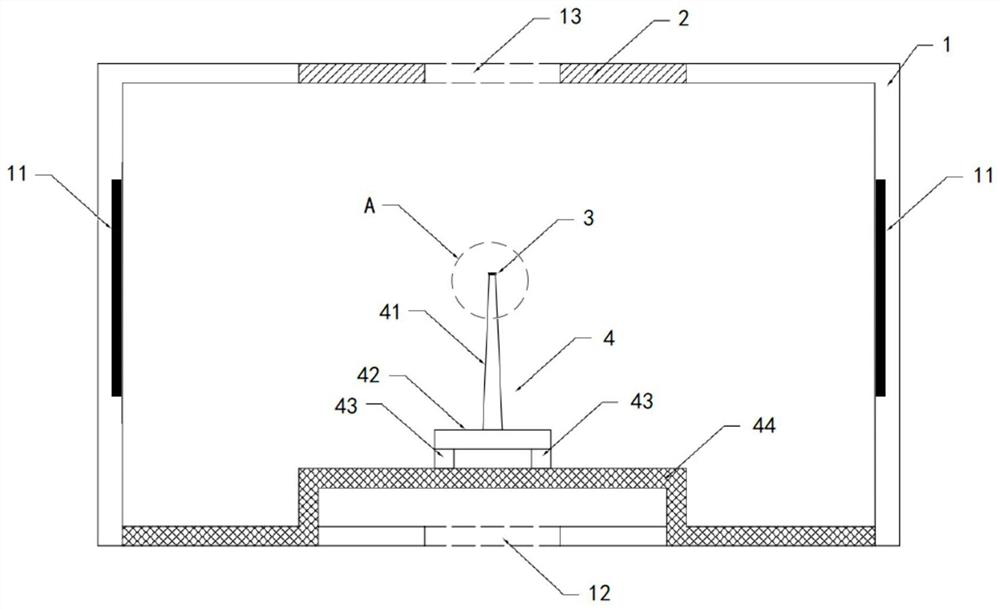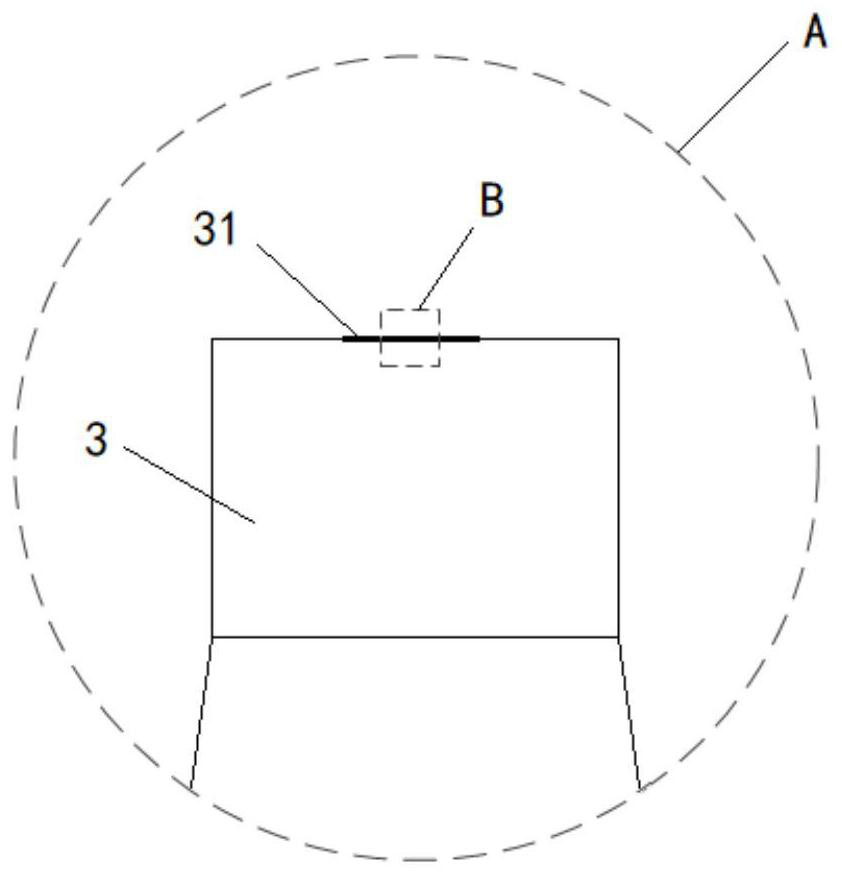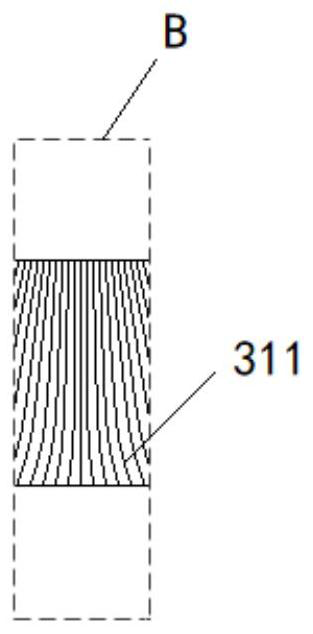Charged microparticle water generating device, control system and control method
A technology for generating devices and particles, applied in electrostatic spraying devices, spraying electric energy devices, spraying devices, etc., can solve the problems of reducing negative ion production efficiency, excessive condensation, excessive condensation and condensation, etc., to prevent excessive condensation, reduce Condensation reaction, the effect of prolonging the service life
- Summary
- Abstract
- Description
- Claims
- Application Information
AI Technical Summary
Problems solved by technology
Method used
Image
Examples
Embodiment 1
[0073] This embodiment provides a charged micro-particle water generating device, such as figure 1 As shown, it includes: a casing 1, a receiving electrode 2, a discharge electrode 3 with a nano-hydrophobic structure, a discharge electrode supporting heat-dissipating member 4, and the like.
[0074] A first heating member 11 is provided inside the shell wall of the casing 1, and the first heating member 11 is located inside the side wall, and is used to adjust the temperature and absolute humidity of the internal environment of the casing 1, so that the temperature is kept above zero degrees Celsius and the absolute humidity is kept at the condensation temperature. Above the critical point and below the excessive dew point. By heating the inside of the shell to keep the temperature in the shell cavity higher than zero degrees Celsius, the tiny ice slag suspended in the air is caused to melt and volatilize into water vapor, so that it can be used in the environment of sub-zero ...
Embodiment 2
[0085] This embodiment provides another structure of the nano-hydrophobic structure layer of the above-mentioned charged micro-particle water generating device, such as Figure 4 As shown, another nano-hydrophobic structure layer 31 is applied on the central area of the upper end face of the discharge electrode 3 ’ , the nano-hydrophobic structure layer 31 ’ It is a concave structure with uniform thickness, which mainly constitutes the nano-hydrophobic structure layer 31 ’ The nanofibers are arranged in the form of converging toward the center, the nanofibers are equally spaced, the upper ends of the nanofibers are set to be hydrophobic, and the upper end surface area of the nanofibers is connected to the center of the upper end surface of the four adjacent nanofibers. The ratio of the area of the pattern formed by the lines is 1:1.96 to 2.56, and the area of the upper end surface of the nanofiber filament and the nano-hydrophobic structure layer 31 ’ The ratio of th...
Embodiment 3
[0087] This embodiment provides another structure of the nano-hydrophobic structure layer of the above-mentioned charged micro-particle water generating device, such as Figure 5 As shown, another nano-hydrophobic structure layer 31 ″ is applied on the central area of the upper end face of the discharge electrode 3 , and the nano-hydrophobic structure layer 31 ″ is a structure with a convex and uniform thickness, so as to mainly constitute the nano-hydrophobic structure layer 31 ″ The nanofibers are distributed from the center to the periphery, the nanofibers are equally spaced, the upper ends of most of the nanofibers are set to be hydrophobic, and the upper ends of a small part of the nanofibers are set to be hydrophilic. A small part of the nanofibers is divided into multiple groups containing the same number of nanofibers and evenly interspersed between the majority of the nanofibers in the form of bundles. The ratio of the area of the graph formed by the center line o...
PUM
 Login to View More
Login to View More Abstract
Description
Claims
Application Information
 Login to View More
Login to View More - R&D
- Intellectual Property
- Life Sciences
- Materials
- Tech Scout
- Unparalleled Data Quality
- Higher Quality Content
- 60% Fewer Hallucinations
Browse by: Latest US Patents, China's latest patents, Technical Efficacy Thesaurus, Application Domain, Technology Topic, Popular Technical Reports.
© 2025 PatSnap. All rights reserved.Legal|Privacy policy|Modern Slavery Act Transparency Statement|Sitemap|About US| Contact US: help@patsnap.com



